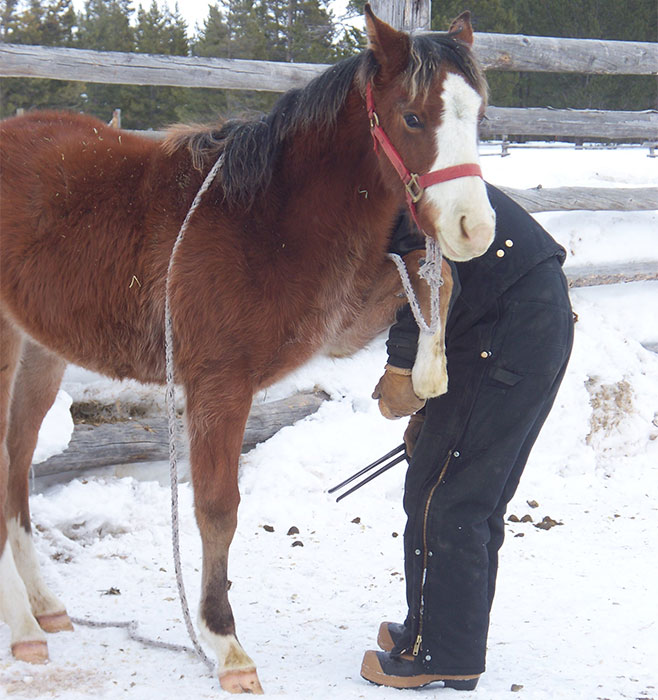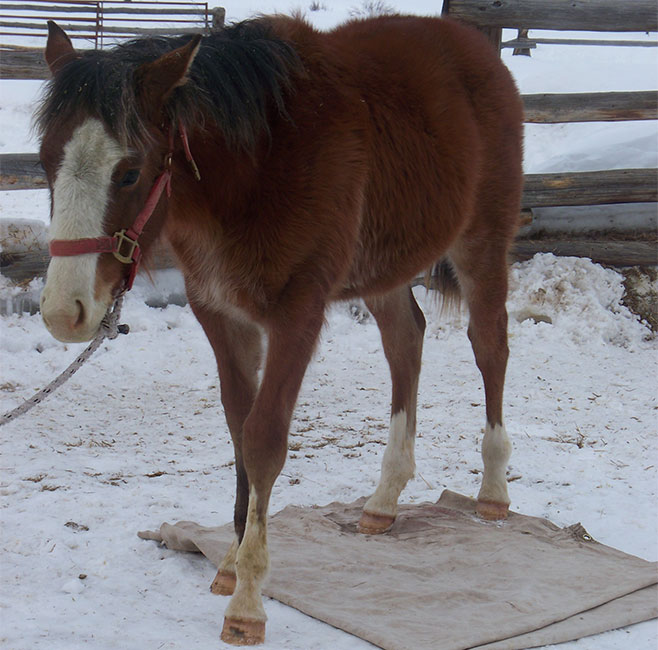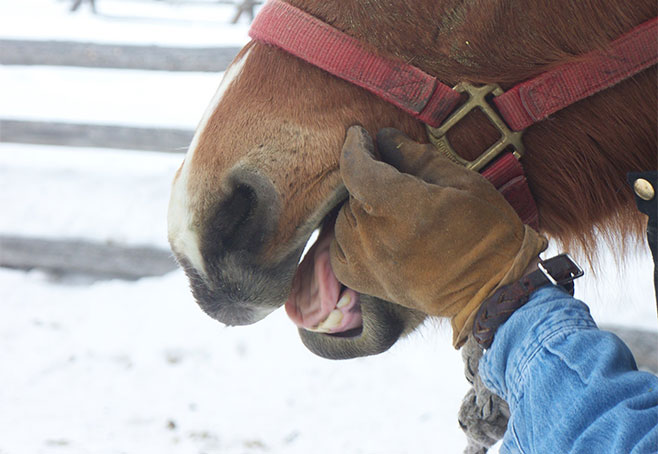Day 2 will be broken into a.m and p.m. since we’re going to follow Jeff as he works with the young six-month old foals on their lessons – and they have a LOT to learn!!
Just having one of the largest Dude Ranch herds around isn’t enough to guarantee excellent trail horses. Neither is relying on our Appaloosa breed which is known for it’s gentle demeanor, sure-footedness and great color. And, while we feel breeding our own foals is essential, it is the training that ultimately determines what kind of dude horse that animal will become. Just as every child has it’s own personality and learning method, every foal does as well. So, training methods and time spent will vary from animal to animal.
Born in late spring or early summer on our winter pasture, we endeavor to spend a little time with each new foal in order to introduce it to people and make the training process a little smoother. Then, after they have been moved up to the ranch and spending some time getting strong with their Mom’s, we spend another week or two with each little one at the end of summer. At that time they are introduced to halters, and just being handled and led a little.
However, the main and most important training takes place at around 6-8 months of age when they are weaned from their dams. In mid-winter, we separate them from their mothers, and then trailer the young ones up to the ranch where they’ll spend six weeks being weaned and getting that crucial early training. We also bring along a “babysitter” – typically an older gelding “uncle” – to give them added security.
A Montana Dude Ranch, just like any other horseback vacation destination, must ensure that their mounts are gentle and trusting. While getting a horse to the point of being novice-ready takes years, the initial steps are what lay the foundation for everything else. Done properly, they will help that horse learn each new lesson without fear and without losing their curiosity and spirit.
The first task is to re-introduce each foal to the halter, and to earn their trust enough that they allow themselves to be caught without needing to rope them first. Once they begin understanding that first step, Jeff spends additional time each day with every one individually teaching them the basic for all future lessons. For the first week or so, it’s all about touching them all over, petting them, getting them to pick up their feet even if it’s just a little, and leading.
Each foal learns that the quickest way out of the round-pen, is through Jeff. They must be caught and do their lessons, and then they get turned out. It takes only a few days for them to figure this out! Soon, they are turning to him as he approaches and waiting to be haltered.
Horses are “flight or fight” animals. Their first reaction to any situation is typically flight. If they can’t run, then they’ll fight. So, in order to teach them not to be spooky, we must de-sensitize them to touch on all parts of their body and also to anything that might flap in the wind, etc. We do this by familiarizing them with someone moving all around, touching them and also with blankets and tarps.
Another part is to teach them to give to pressure on their poll (the spot between their ears on top of their head) and to allow things to go in their mouths. These lessons will be of great value when it’s time to start bridling!
Attached are a few pictures of Jeff working with the foals.


We hope you enjoyed following Jeff as he worked with the babies this morning! Join us for the p.m. session in a week or so, and we’ll be covering the other half of their learning!






